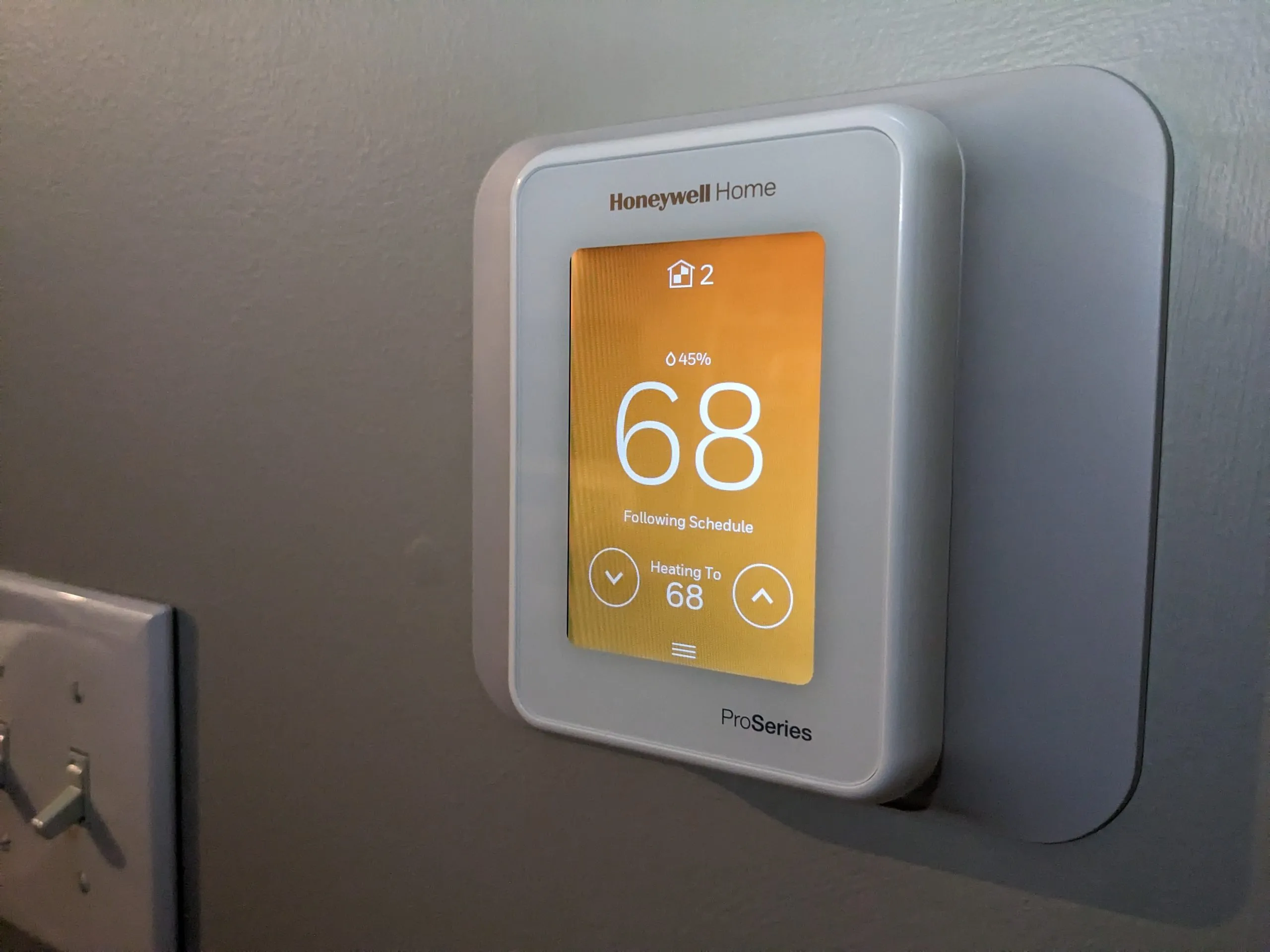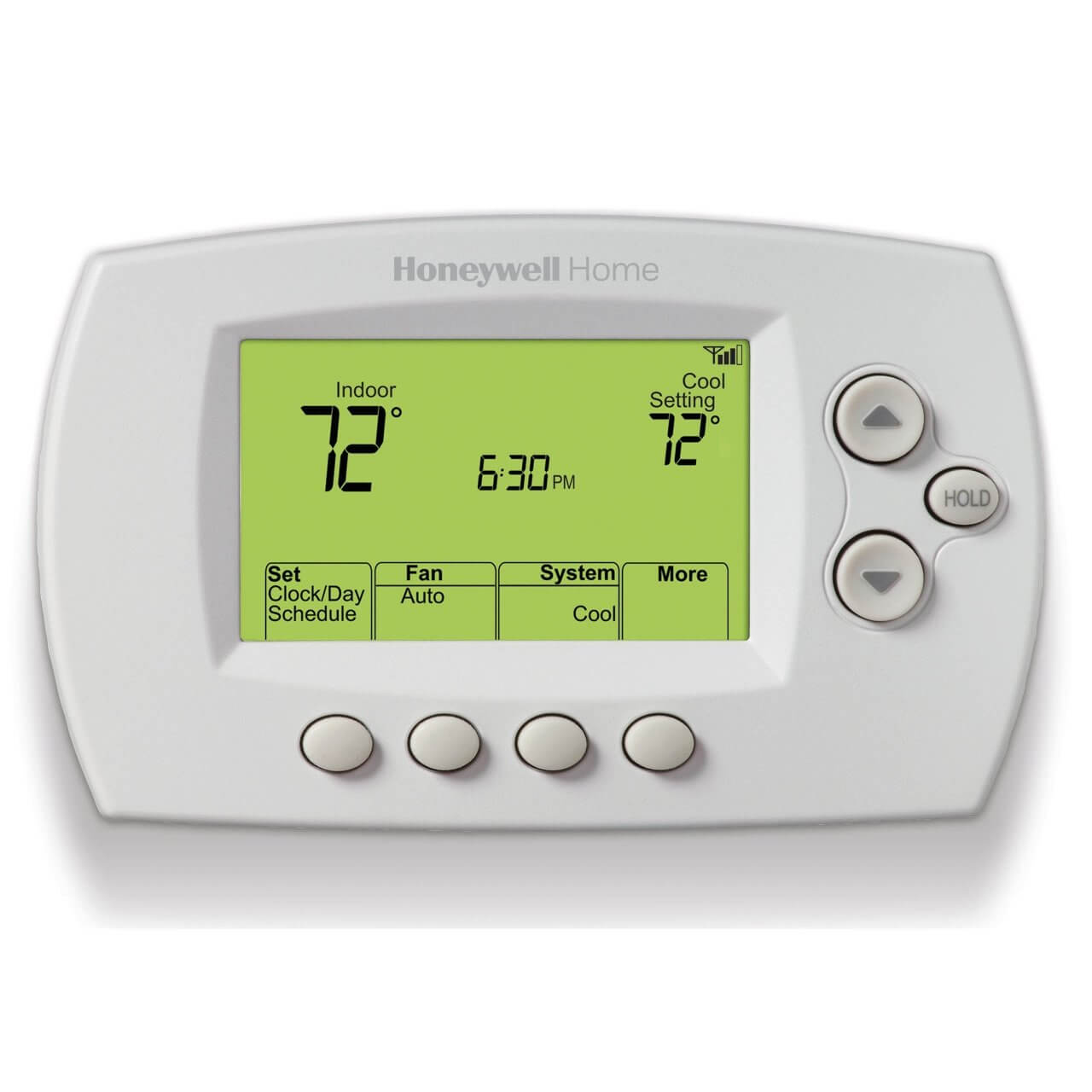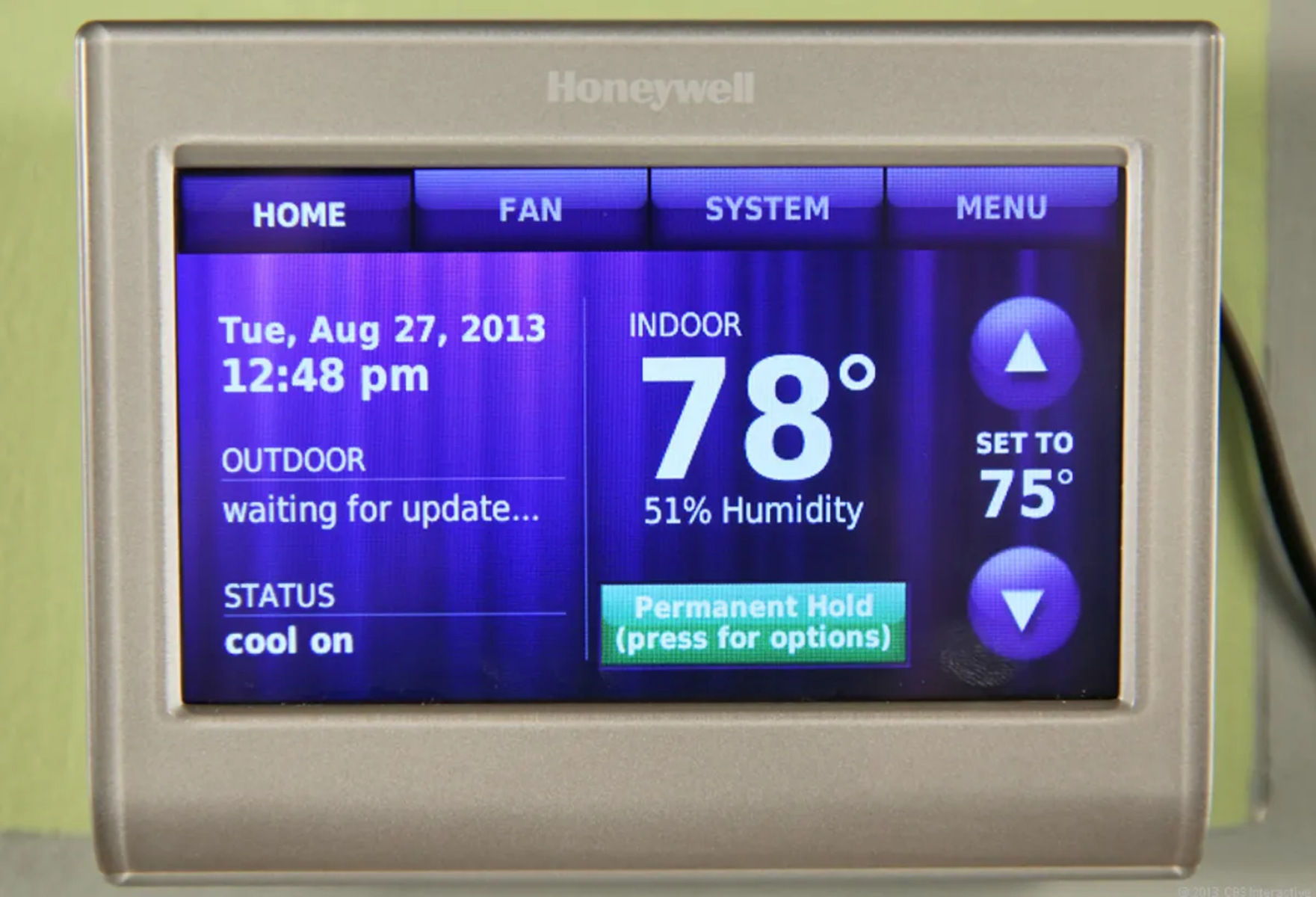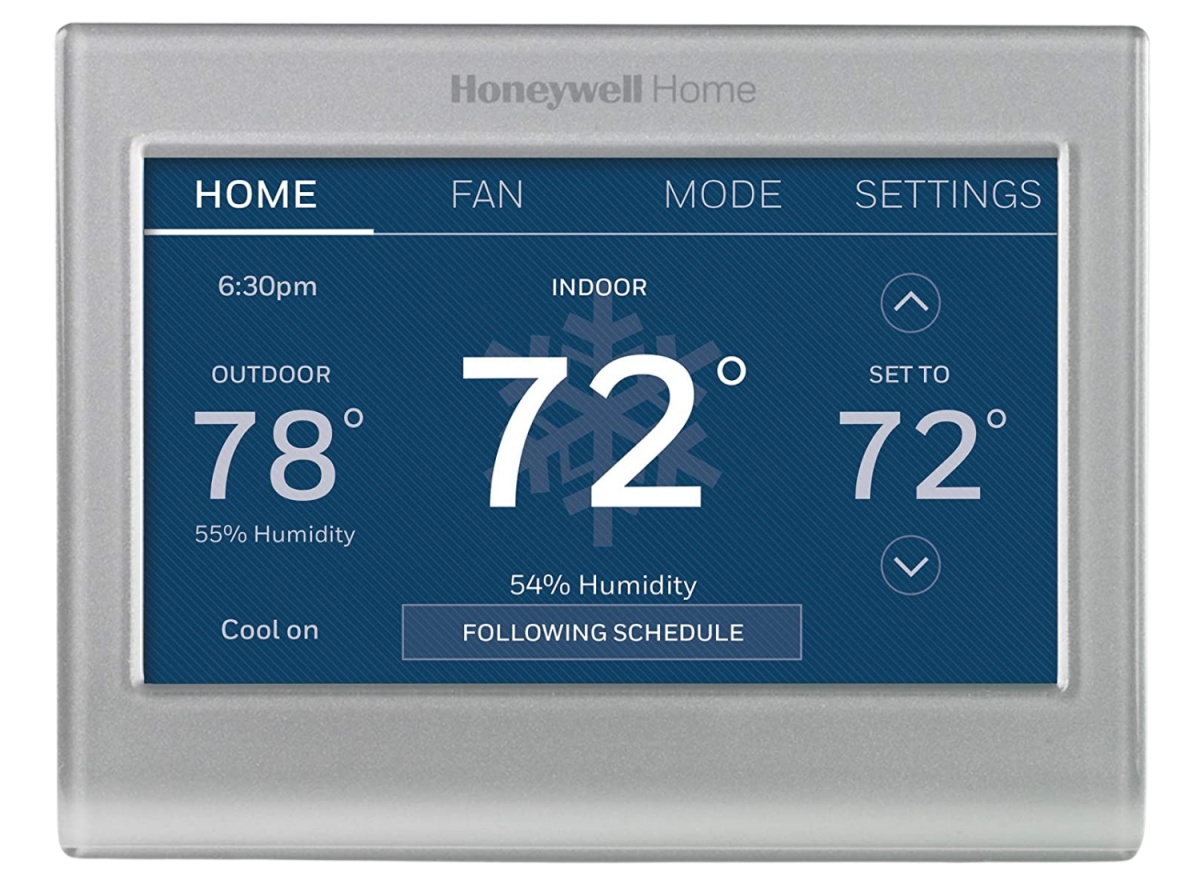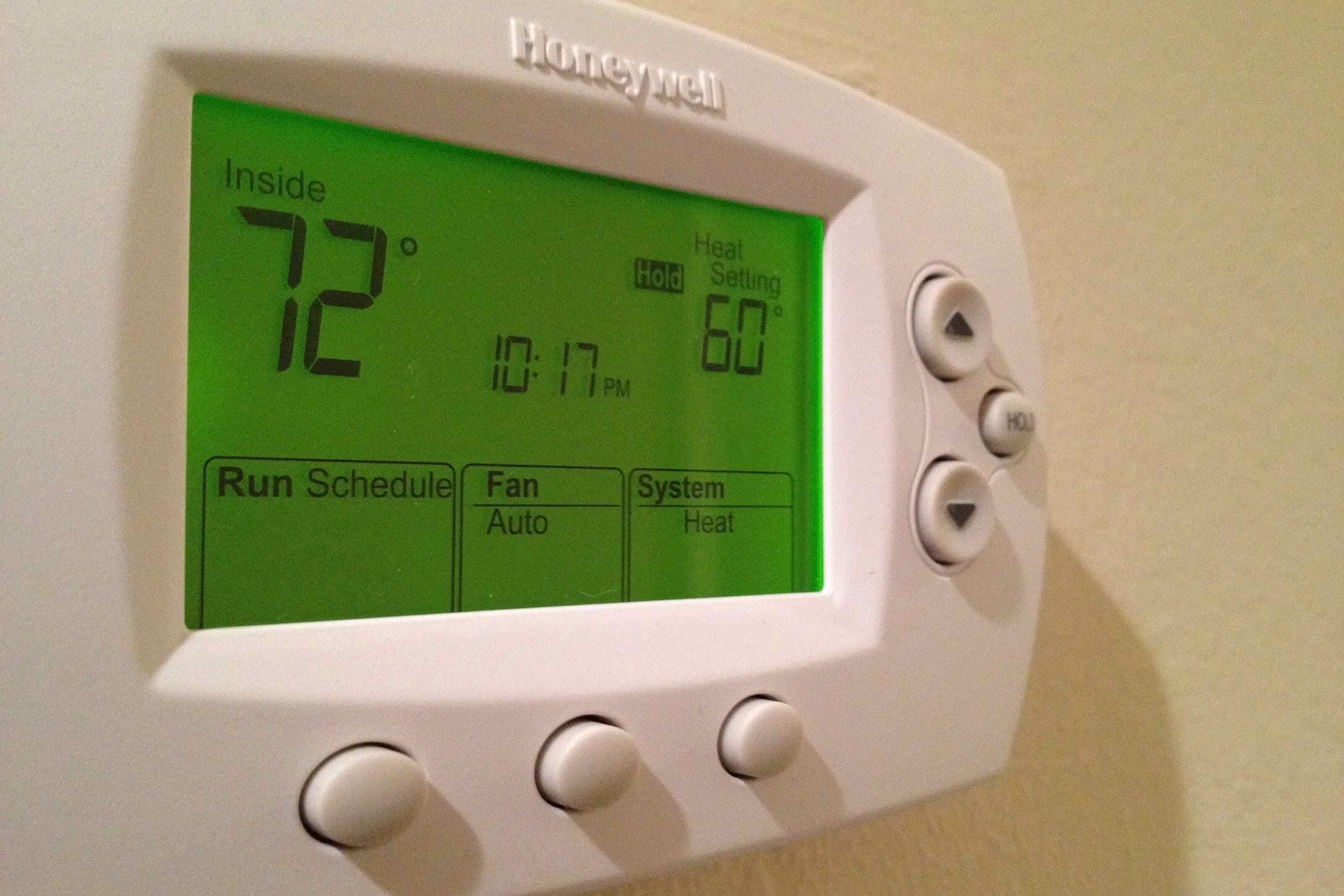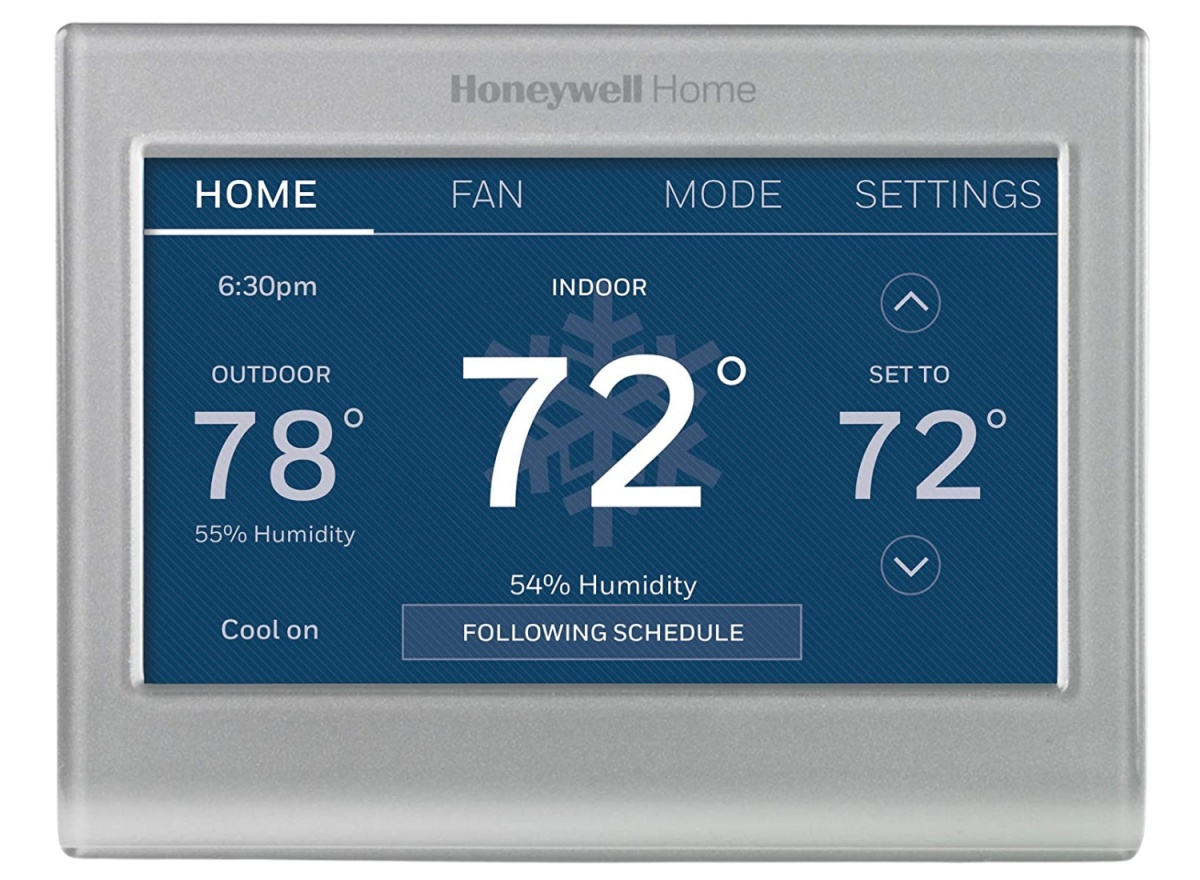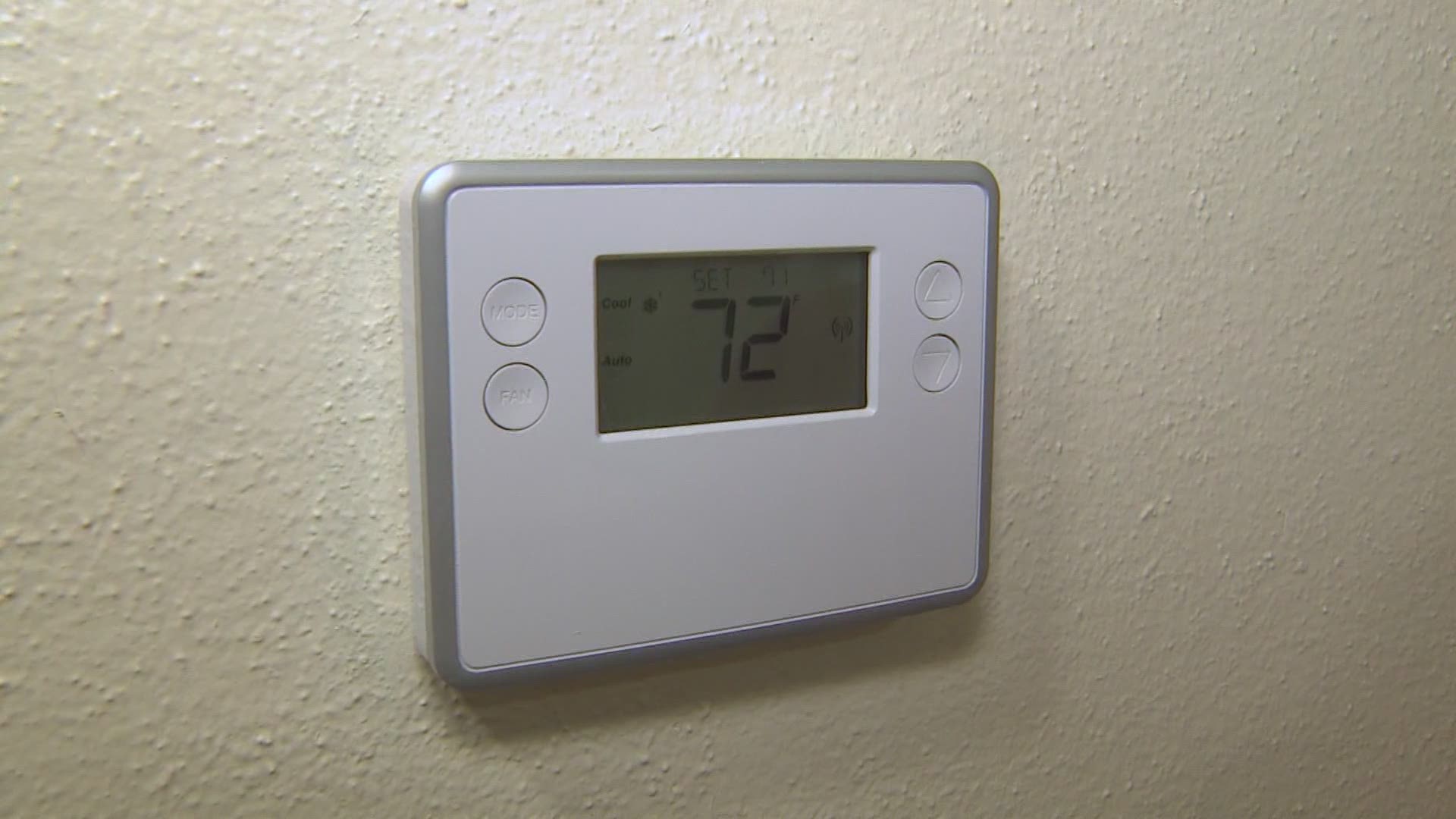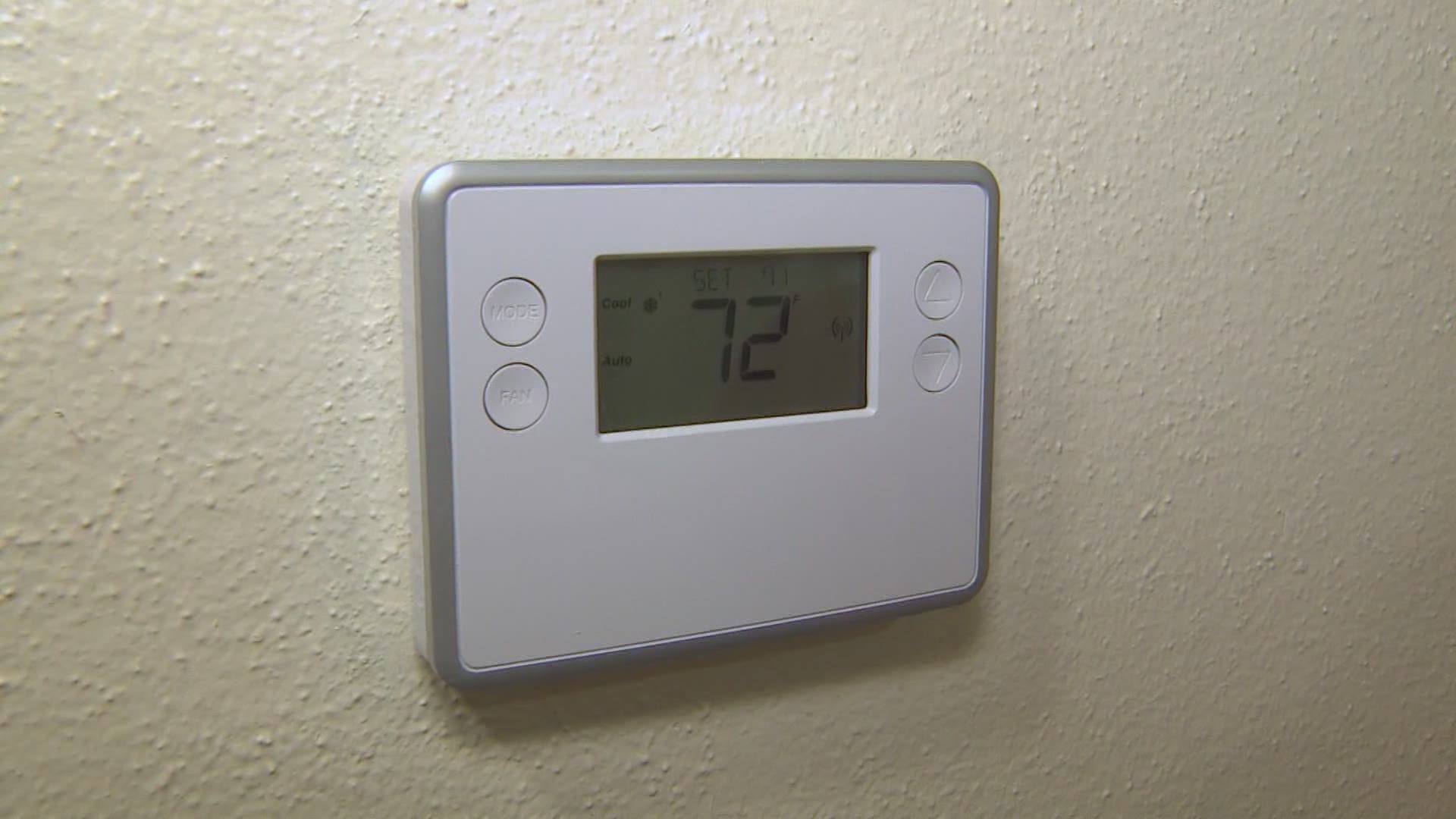Introduction
A Honeywell smart thermostat is a cutting-edge device that allows homeowners to control and regulate their indoor temperature with ease and efficiency. This advanced technology combines traditional thermostat functions with innovative features such as remote access, energy-saving capabilities, and integration with smart home systems.
With a Honeywell smart thermostat, you have the power to customize your home’s climate through an intuitive interface, whether you are at home or away. By optimizing heating and cooling settings, these devices can help reduce energy consumption and lower utility costs, all while maintaining a comfortable living environment.
In this article, we will explore the functionality, features, and benefits of a Honeywell smart thermostat. We will delve into how these devices work, their user interface, connectivity options, energy-saving features, and the installation process. Whether you’re a tech enthusiast looking to upgrade your home or a homeowner seeking ways to increase energy efficiency, this article will provide you with the essential information you need to understand and utilize a Honeywell smart thermostat to its full potential.
So, let’s dive into the world of Honeywell smart thermostats and discover how these intelligent devices can transform your home into a more comfortable and energy-efficient space.
What is a Honeywell Smart Thermostat?
A Honeywell smart thermostat is a modern, programmable device that allows homeowners to control their heating and cooling systems remotely and with unparalleled precision. Unlike traditional thermostats that require manual adjustments, a smart thermostat offers advanced features that enhance comfort and convenience while maximizing energy efficiency.
One of the key features of a Honeywell smart thermostat is its ability to connect to your home’s Wi-Fi network, allowing you to control and monitor your HVAC system from anywhere using a smartphone, tablet, or computer. This means you can adjust the temperature, set schedules, and receive alerts and notifications even when you’re not at home. Whether you’re on vacation or heading back from work, you can ensure your home is at the perfect temperature when you arrive.
Another advantage of a Honeywell smart thermostat is its programmable capabilities. You can set up personalized heating and cooling schedules based on your daily routines and preferences. For example, you can lower the temperature during the night when you’re asleep and raise it before you wake up, ensuring optimal comfort while saving energy. You can also create different temperature zones within your home, allowing you to prioritize heating or cooling in specific areas depending on your needs.
Moreover, Honeywell smart thermostats often come equipped with intelligent features such as adaptive learning and geofencing. Adaptive learning technology learns your temperature preferences over time and adjusts the heating and cooling settings accordingly, ensuring your home is always at the desired temperature without manual input. Geofencing uses your smartphone’s location to automatically adjust the thermostat when you leave or return home, optimizing energy usage and comfort.
Overall, a Honeywell smart thermostat offers homeowners increased control, convenience, and energy efficiency. By leveraging advanced technology and connectivity, these devices can help reduce energy waste, lower utility costs, and create a comfortable living environment tailored to your needs.
How Does a Honeywell Smart Thermostat Work?
A Honeywell smart thermostat works by utilizing a combination of sensors, connectivity, and intelligent algorithms to accurately monitor and control your home’s heating and cooling systems. These devices are designed to provide precise temperature regulation while optimizing energy consumption.
One of the essential components of a Honeywell smart thermostat is the temperature sensor. This sensor constantly detects and measures the temperature in your home, providing real-time data to the thermostat. Based on this information, the thermostat determines whether the heating or cooling system needs to be activated to reach the desired temperature.
Unlike traditional thermostats that require manual adjustments, a Honeywell smart thermostat offers several modes of operation. These modes include manual mode, where you can manually adjust the temperature settings, and programmable mode, where you can create custom schedules to automate temperature changes throughout the day.
Furthermore, a Honeywell smart thermostat can connect to your home’s Wi-Fi network. This connectivity allows you to control and monitor the thermostat remotely using a smartphone app or a web portal. Whether you’re at work, traveling, or simply in another room, you can easily adjust the temperature settings, change modes, or view energy usage data from the convenience of your mobile device or computer.
In addition to Wi-Fi connectivity, Honeywell smart thermostats often offer integration options with smart home systems such as Amazon Alexa or Google Assistant. This means you can control your thermostat using voice commands, effortlessly adjusting the temperature or changing modes without even lifting a finger.
Energy efficiency is another crucial aspect of how a Honeywell smart thermostat works. These devices come equipped with energy-saving features such as adaptive learning and geofencing. Adaptive learning algorithms analyze your temperature preferences and behavior patterns to automatically adjust the thermostat settings without your intervention. Geofencing technology utilizes your smartphone’s location to sense when you leave or return home, allowing the thermostat to adjust the temperature accordingly. These features ensure optimal energy usage and comfort, all while reducing wasted energy and saving you money on utility bills.
In summary, a Honeywell smart thermostat employs advanced sensors, connectivity, and intelligent algorithms to provide precise temperature control, remote access, and energy-saving capabilities. With their smart features and intuitive operation, these thermostats offer convenience, energy efficiency, and a comfortable living environment.
The User Interface of a Honeywell Smart Thermostat
The user interface of a Honeywell smart thermostat is designed to be intuitive, user-friendly, and visually appealing. It allows homeowners to easily control and monitor the temperature settings of their HVAC system with just a few taps or clicks.
One of the key elements of the user interface is the display screen. Honeywell smart thermostats feature a high-resolution color display that provides clear and detailed information about the current temperature, set temperature, and other relevant data. The screen is typically responsive and easy to navigate, ensuring a seamless user experience.
On the display screen, you will find various icons and indicators that represent different functions and settings. These icons may include symbols for temperature adjustment, mode selection (cooling, heating, or auto), fan control, and energy-saving mode. The indicators show the status of the HVAC system, Wi-Fi connection, and battery level if applicable.
Most Honeywell smart thermostats also come with touch controls, allowing you to adjust the temperature settings by simply tapping on the screen. You can increase or decrease the set temperature, switch between heating and cooling modes, and access additional features and settings.
Depending on the model and features of the thermostat, you may have access to advanced settings such as scheduling, geofencing, and adaptive learning. These settings can be accessed through the user interface, allowing you to customize your thermostat’s behavior and optimize energy usage based on your preferences.
In addition to the built-in controls, you can also control a Honeywell smart thermostat remotely using a smartphone app or a web portal. The app provides a user-friendly interface for adjusting temperature settings, creating schedules, and accessing advanced features from anywhere with an internet connection. This remote access ensures that you have full control over your thermostat, even when you’re not at home.
Overall, the user interface of a Honeywell smart thermostat is designed to simplify temperature control and make it accessible to users of all technical levels. With its intuitive display, touch controls, and remote access options, homeowners can easily manage their HVAC system and create a comfortable living environment tailored to their needs.
Connectivity and Integration Options
One of the key advantages of a Honeywell smart thermostat is its connectivity options, allowing you to stay connected and in control of your home’s temperature settings.
A Honeywell smart thermostat typically connects to your home’s Wi-Fi network, enabling you to control and monitor the thermostat remotely. Through a smartphone app or a web portal, you can adjust the temperature, switch modes, and access advanced settings from anywhere, anytime. This remote access capability is especially convenient when you’re away from home and want to ensure your living space is at the ideal temperature when you return.
Furthermore, many Honeywell smart thermostats offer seamless integration with popular smart home systems and devices such as Amazon Alexa, Google Assistant, and Apple HomeKit. This integration allows you to control your thermostat using voice commands, adding an extra layer of convenience to your home automation setup. You can simply say commands like “Hey Google, set the temperature to 72 degrees” or “Alexa, increase the cooling mode” to adjust your thermostat without lifting a finger.
In addition to voice control, Honeywell smart thermostats can also integrate with other smart devices in your home. For example, you can connect your thermostat with smart lighting systems, smart motion sensors, or smart door locks. This integration enables your thermostat to respond to cues from these devices, such as adjusting the temperature based on occupancy or turning off the HVAC system when the doors are open, resulting in enhanced energy efficiency and overall home automation.
Moreover, some Honeywell smart thermostats offer integration with utility demand response programs. These programs allow utility providers to send signals to your thermostat during peak-demand periods, enabling your thermostat to make automatic adjustments to reduce energy consumption. By participating in demand response programs, you can contribute to energy conservation efforts and potentially earn incentives or reduced utility rates.
Overall, the connectivity and integration options of a Honeywell smart thermostat offer enhanced control, convenience, and synergy with other smart home devices. Whether you prefer remote access via a smartphone app, voice control through smart assistants, or integration with other smart devices, a Honeywell smart thermostat provides the flexibility to create a truly connected and intelligent home environment.
Energy Saving Features of a Honeywell Smart Thermostat
A Honeywell smart thermostat is not only convenient but also offers a range of energy-saving features that can help reduce your energy consumption and lower your utility bills.
One of the primary energy-saving features of a Honeywell smart thermostat is its ability to create customized heating and cooling schedules. With programmable modes, you can set specific temperature levels for different times of the day to match your daily routine. For example, you can set the thermostat to lower the temperature during the hours when you are typically away from home and raise it before you return. By avoiding unnecessary heating or cooling when you’re not at home, you can significantly reduce energy waste.
Another energy-saving feature is adaptive learning. Honeywell smart thermostats utilize algorithms to learn your temperature preferences and behaviors over time. The thermostat automatically adjusts temperature settings based on your usage patterns, ensuring optimal comfort while reducing energy consumption. This means you no longer have to manually adjust the thermostat as it adapts to your needs and preferences.
Geofencing is another feature that can contribute to energy savings. By using your smartphone’s location, the thermostat can detect when you leave or return home. It can then adjust the temperature settings accordingly, ensuring energy is not wasted on heating or cooling an empty house. Geofencing can also work in conjunction with adaptive learning, allowing the thermostat to anticipate your arrival and have your home at the desired temperature when you come back.
Honeywell smart thermostats often come with energy reports and usage insights. These reports provide you with detailed information about your energy consumption patterns, allowing you to track and identify areas where you can make further adjustments to reduce waste. Additionally, the usage insights can provide recommendations on how to optimize your energy usage and make more informed decisions regarding your heating and cooling settings.
Furthermore, some Honeywell smart thermostats have features that take advantage of weather data. The thermostat can use weather forecasts to adjust the temperature settings accordingly. For example, on a particularly sunny day, the thermostat may slightly increase the cooling setpoint to compensate for the heat gain coming from the sun. By leveraging this information, the thermostat can optimize energy usage and maintain a comfortable indoor environment.
By utilizing these energy-saving features, a Honeywell smart thermostat enables you to minimize energy waste and reduce your carbon footprint. Not only can you save money on your utility bills, but you can also contribute to environmental sustainability by conserving energy resources.
Installation and Setup Process
The installation and setup process of a Honeywell smart thermostat is designed to be user-friendly and straightforward. While it may vary depending on the specific model and your HVAC system, here is a general overview of the steps involved.
1. Start by turning off the power: Before beginning the installation process, it is crucial to turn off the power to your HVAC system at the circuit breaker. This step ensures your safety during the installation process.
2. Remove the existing thermostat: If you have a traditional thermostat, carefully remove it from the wall by unscrewing it. Make sure to take note of the wires and their corresponding labels.
3. Mount the new thermostat: Honeywell smart thermostats come with a mounting plate that needs to be installed on the wall. Use screws or adhesive tape to securely attach the mounting plate.
4. Connect the wires: Match the labeled wires from your HVAC system to the corresponding terminals on the thermostat’s mounting plate. Follow the provided instruction manual or wiring diagram to ensure the correct connection.
5. Attach the thermostat: Once the wires are properly connected, gently attach the thermostat to the mounting plate, ensuring it is securely in place.
6. Power on and set up the thermostat: Turn the power back on at the circuit breaker. The thermostat should power on, and you will be prompted to complete the initial setup. This usually involves selecting the language, setting the time and date, and connecting the thermostat to your Wi-Fi network.
7. Customize settings: Once the initial setup is complete, you can customize the settings of your Honeywell smart thermostat to match your preferences. This includes adjusting temperature schedules, enabling energy-saving features, and integrating with other smart home devices if desired.
8. Test the thermostat: To ensure everything is functioning correctly, test your thermostat by adjusting the temperature settings and monitoring the HVAC system’s response. Check that the temperature readings on the thermostat match the actual temperature in your home.
If you encounter any difficulties during the installation process, refer to the instruction manual provided with your Honeywell smart thermostat or consult Honeywell’s technical support for assistance. It is important to follow the instructions carefully to ensure proper installation and optimal performance of your smart thermostat.
Troubleshooting and Tips for Using a Honeywell Smart Thermostat
While Honeywell smart thermostats are designed to be user-friendly and reliable, you may occasionally encounter issues or have questions about their functionality. Here are some troubleshooting tips and useful tips to ensure a smooth experience with your smart thermostat.
1. Wi-Fi Connectivity Issues:
- If your thermostat is having trouble connecting to your Wi-Fi network, check the network settings and ensure the password is entered correctly.
- Try restarting your router and thermostat to establish a new connection.
- Ensure that your thermostat is within range of your Wi-Fi router.
- If all else fails, contact Honeywell support for further assistance.
2. Temperature Discrepancies:
- If you notice a difference between the temperature displayed on your Honeywell smart thermostat and the actual room temperature, it may be due to the thermostat’s placement. Ensure that the thermostat is not exposed to direct sunlight, drafts, or other sources of heat or cold.
- Consider calibrating the thermostat by comparing its readings to a separate thermometer and adjusting the settings if necessary.
3. HVAC System Compatibility:
- Before purchasing a Honeywell smart thermostat, ensure that it is compatible with your HVAC system. Check the compatibility list provided by Honeywell or consult a professional HVAC technician if you’re unsure.
4. Regular Maintenance:
- Clean the thermostat regularly to remove any dust or debris that may affect its performance.
- Replace the batteries, if applicable, when the low battery indicator appears on the thermostat.
5. Energy-Saving Tips:
- Take advantage of the programmable schedule feature by setting temperature setbacks during times when you are away from home.
- Enable the adaptive learning feature to allow the thermostat to learn your preferences and automatically adjust the temperature for comfort and energy savings.
- Consider integrating your Honeywell smart thermostat with other smart home devices to optimize energy usage and efficiency.
6. Firmware Updates:
- Regularly check for firmware updates for your Honeywell smart thermostat. These updates may add new features, improve performance, or fix any bugs or issues.
- Refer to the instruction manual or Honeywell’s website for instructions on how to update the thermostat’s firmware.
If you still experience difficulties or have unanswered questions, consult the user manual provided with your Honeywell smart thermostat. Honeywell also offers technical support services to assist with troubleshooting and resolving any technical issues you may encounter.
Conclusion
A Honeywell smart thermostat offers homeowners a convenient, efficient, and energy-saving solution for controlling their heating and cooling systems. With features such as remote access, programmable schedules, and integration with smart home systems, these thermostats provide enhanced comfort and flexibility.
Through its intuitive user interface, a Honeywell smart thermostat allows users to easily adjust temperature settings, create custom schedules, and access advanced features. The connectivity options available enable remote control via smartphone apps or web portals, making it convenient to manage temperature settings from anywhere.
Energy-saving features such as adaptive learning, geofencing, and weather-based adjustments contribute to reducing energy waste and lowering utility bills. By optimizing temperature settings based on user preferences and occupancy, these thermostats maximize comfort while minimizing energy consumption.
The installation and setup process of a Honeywell smart thermostat is generally straightforward, with step-by-step instructions provided in the user manual. Troubleshooting tips and maintenance suggestions ensure a smooth experience and help users address any issues they may encounter.
In conclusion, a Honeywell smart thermostat offers a smart and efficient solution to temperature control in your home. With its advanced features, intuitive user interface, and energy-saving capabilities, a Honeywell smart thermostat can help create a comfortable living environment while reducing energy consumption and saving you money on utility bills.







